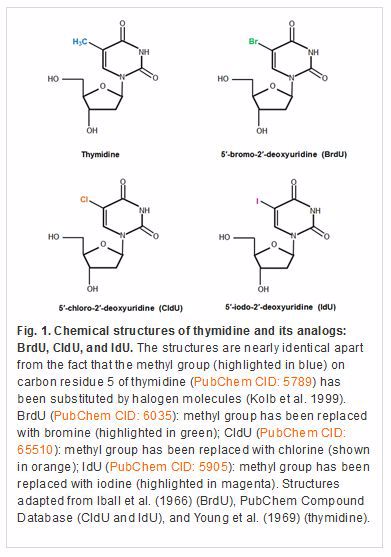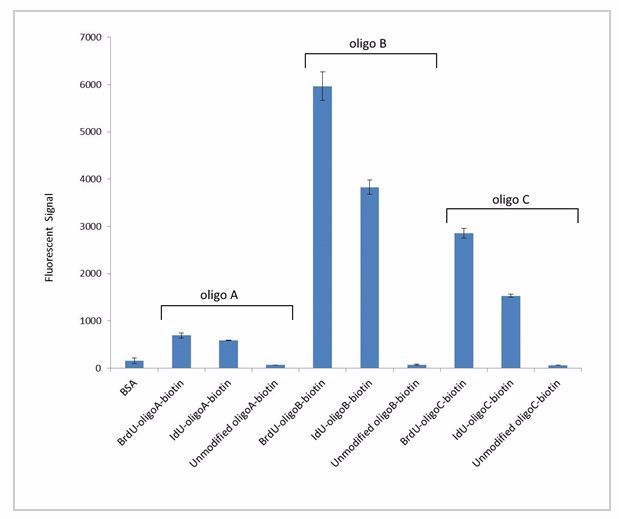Measurement of BrdU incorporation with anti-BrdU antibodies
The thymidine analog 5′-bromo-2′-deoxyuridine (BrdU) is a popular reagent in various scientific disciplines ranging from cancer to neuroscience research. The chemical is frequently added to samples, such as mammalian cell lines, and subsequently incorporated into newly synthesized DNA during replication.
To measure cell proliferation, the incorporated BrdU is detected with anti-BrdU antibodies, such as the Mouse Anti-BrdU Antibody, clone Bu20a (MCA2483) and Rabbit Anti-BrdU Antibody (AHP2405). However, to ensure that the antibody is able to bind to BrdU, DNA treatment prior to antibody staining is required (Liboska et al. 2012). In the literature, endonucleases, such as DNase I (Deoxyribonuclease I) and acids, such as hydrochloric acid, are frequently used to cleave or denature the DNA to make incorporated BrdU accessible (Liboska et al. 2012).
Cross-reactivity of anti-BrdU antibodies
Although the chemical structures of thymidine and its analog BrdU are nearly identical, as highlighted in Figure 1, anti-BrdU antibodies, such as Mouse Anti-BrdU Antibody, clone Bu20a, have very little cross-reactivity to thymidine itself (Aten et al. 1992, Magaud et al. 1989). However, many anti-BrdU antibodies including clone Bu20a, recognize the other halogenated thymidine analogs 5′-chloro-2′-deoxyuridine (CldU) and 5′-iodo-2′-deoxyuridine (IdU; Figure 2) (Liboska et al. 2012, Kimoto et al. 2008). This is due to the structural similarities of the three different halogenated thymidine analogs, shown in Figure 1. Knowing the cross-reactivity of your anti-BrdU antibody is especially critical when performing double-labeling experiments with BrdU and other non-halogenated thymidine analogs, such as 5′-ethynyl-2′-deoxyuridine (EdU).


